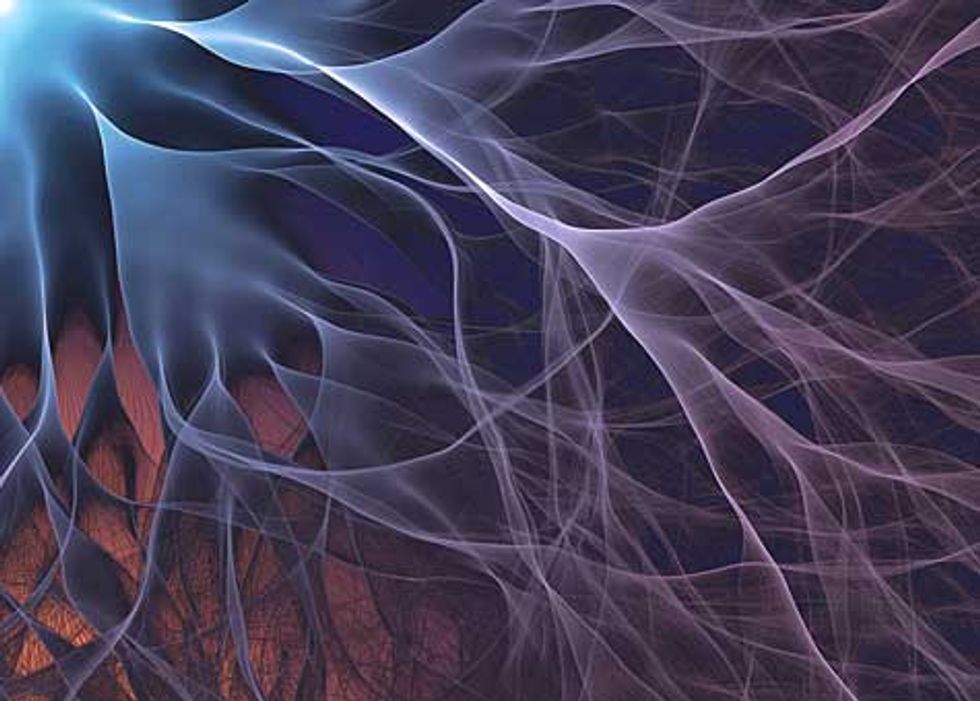The ability to visualize the flow of electrons through very thin semiconductor structures isn't just good science; it's good art. Harvard University physicist Eric J. Heller, inspired by the images coming from the laboratory of his colleague Robert M. Westervelt, has created a series of interpretations based on the flow of what's called a two-dimensional electron gas, seen in this branching pattern named Transport VI. These gases are found in certain semiconductor devices, such as high electron-mobility transistors, that have a thin buried layer different from the rest of the structure.
Westervelt's original experiments were done in a gallium arsenide (GaAs) device containing a layer of aluminum gallium arsenide (AlGaAs). The electrons were squeezed through a narrow point [upper left] built into the device, and a scanning probe microscope showed how the electrons flowed. Scientists expected to see the electrons smoothly fanning out. Instead they saw narrow branching strands. Heller theorized that the influence of ionized dopants and impurities in the GaAs part of the device were giving the electron gas in the AlGaAs layer a bumpy ride. "The channeling or branching was a surprise and has serious implications for small electronic devices of the future," Heller writes in his description of Transport VI. His virtual gallery is available at https://www.ericjhellergallery.com/.
